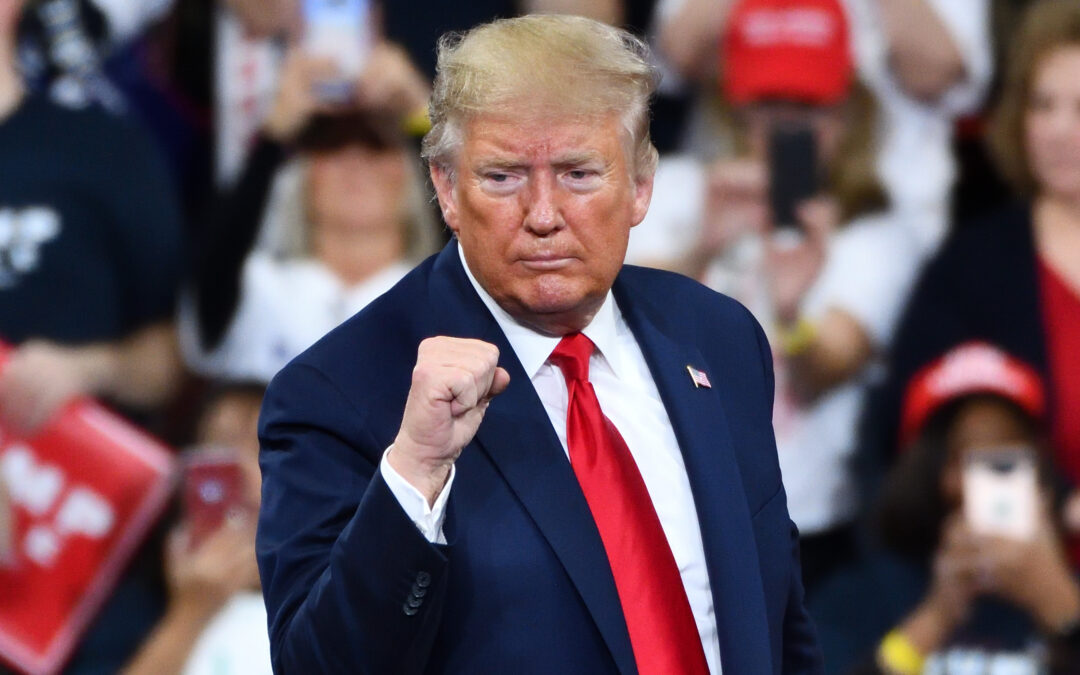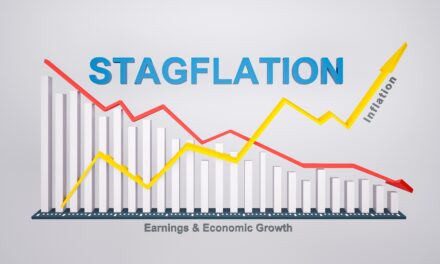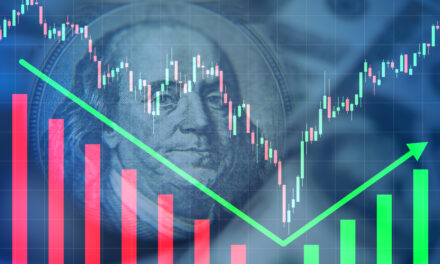Next week, markets are going to surge.
Here’s why:
Welcome to Moneyball Economics, I’m Andrew Zatlin … and I’ve got some great news for you…
Bulls out there, the markets are about to surge this week.
We got some horrible, nasty, ugly economic data. Economic data is so bad it’s going to force Donald Trump to take his foot off the gas, and that’s going to trigger a relief rally.
Up until now, we know Trump has been under enormous pressure from Wall Street. No doubt the titans of Wall Street are tapping him on the shoulder because when he came in, the market was raging. Six weeks later, the market’s melted down. It’s now firmly in contractionary territory.
Donald Trump has led to half a trillion dollars of wealth destruction.
Now, I know he likes to go big, but I don’t think he wants to go down in the books this big … so he’s under pressure. But he’s a little bit immune to that pressure because a lot of his voter base, they’re lower income households and they’re less exposed to what’s going on in Wall Street.
However, they are very exposed to what’s going on on Main Street, and that’s where the damage is happening.
Start off with what is going on with federal government cuts. We’ve got payroll cuts and we’ve got project cuts. Payroll cuts …we’re probably going to be seeing 75,000 jobs eliminated in just a couple of months. That’s pretty heady stuff and more is coming down the pipeline.
At the same time, you’ve got spending freezes, for example, no travel, and you’ve got project eliminations. Well, guess what? This is not contained to the public sector. 500,000 jobs being lost, That’s not just happening at the public sector. It’s also happening now in the private sector. It’s triggering a lot of layoffs and hiring freezes and spending cuts as well.
For example, let’s talk about spending freezes. Let’s talk about Trump saying no travel for government employees. Well, guess what? Government spending on airplanes and hotels is very significant and all of a sudden it’s not happening. So now they’ve got to do layoffs and spending cuts and pullbacks, and that’s what’s going on.
When you eliminate 10, 20 billion of spending by the government, that has a magnifier effect. Suddenly the private sector people are being laid off. You’re not seeing hiring, spending is being cut. You’ve got cutbacks everywhere, and that is what we’re seeing right now.
We’ve got this recessionary impulse that’s very significant, primarily because it was sudden and it was done. A la a wrecking ball.
There’s so much fear, uncertainty and doubt because of the way it’s been handled. There’s been no communication. Nobody knows what’s going on and what’s coming next, and so the private sector businesses are basically saying, we don’t want to risk ourselves. We don’t want to invest in this environment. We don’t know what’s going to happen.
This is how an economy comes to a halt. But what drives it into a deeper recession is the second thing that is happening, and this is the data point that came out. The Atlanta Fed Bank maintains something GDP related where they do an ongoing forecast of what they think, think the GDP is going to be, and it’s got a great track record.
Well, about a month ago, they were forecasting somewhere around 2% GDP growth. Not bad. As of this week, they forecasted get this a negative two point a half percent. They went from 2% plus to minus 2.5%. How did that happen?
Well, again, a lot of this is federal government spending that’s not happening and triggering a lot of private sector that’s not happening. The combination of that spending that brought it down probably close to 0%, but what drove it down into massive negative territory is what’s going on with the balance of trade.
Starting in December and surging in January, we’ve been importing more than we’ve been exporting to the degree that if we maintain this pace, we have basically eliminated two and a half percent of our GDP.
Let me be clear, every month we tend to import about $60-65 billion more than we export.
Starting in December, that shot up to about $80-90 billion. Now all of a sudden it’s up even more in January $130 billion. In other words, we have lapped our usual balance of trade issue of $60 something billion. We’re now at $130 billion. This is massive.
This is how recessions get triggered in that you suddenly have negative GDP one quarter negative GDP the second quarter.
And this is something Trump absolutely wants to avoid because quite frankly, just like what’s going on in the stock market, this is all self-inflicted. He created the stock market meltdown. He’s creating the economic meltdown, and he does not want to go on the books, as creating a recession (unless you’re someone who thinks he does, so that he can then follow that with a recovery).
But for right now, at least it is scary.
One thing that’s not scary is why we are seeing so much imports over exports. A lot of that has to do with the auto sector coming out. So clearly against Mexico and Canada meant devastation for the auto sector. A lot of companies like Ford and GM, they’re assembling across the border and then bringing it back in. They’re taking advantage of cheaper labor rates and so forth. And then importing it.
They were facing a 25% tariff. So what they did is they front ran those tariffs. They just went out there and brought in as much sheet metal as much stuff as they could, and not just the auto sector, A lot of sectors, pharmaceuticals and so forth, they’re trying to front run, and as a result, you’ve got this surge in imports, which will moderate. So don’t think that two and a half percent of the GDP is permanently wrecked in the short term.
So what is Trump going to do?
Well, the answer is he’s going to take his foot off the gas. He’s going to show some relief here, and he’s going to already starting to show what he’s going to do. Hey, Mexico, Canada, maybe we’ll take a pause here, or he’s telling Musk, and I thought this was really interesting.
Again, remember Musk has been going about this with really terrible communication, really much a wrecking ball approach, and all of a sudden you got Trump saying, Hey, you know what? Maybe instead of wielding this ax, you should go out there using a scalpel.
One of the reasons why he put Musk in charge, no doubt was because Musk can do the job of finding federal cuts. But one of the reasons is so that he has a patsy, a fall guy, so that when things look bad for him and the American public starts to object to all of this havoc and devastation and uncertainty that he’s creating, he can blame the other guy.
He can blame Musk. That’s how it’s set up. This is politics.
Right now I see Trump already starting to take his foot off the gas. Is it enough for Wall Street to sit up and take notice? I don’t think so. He’s got to do a lot more, and I think he will because he doesn’t want to see a negative GDP growth this quarter because he’s the only one who’s going to get blamed for it, and I don’t think he’s ready to take that blame. Not until he can point to better accomplishments, surge coming and let’s get in it to win it. Zatlin out.

Andrew Zatlin
Editor, Superforecast Trader & Moneyball Economics





